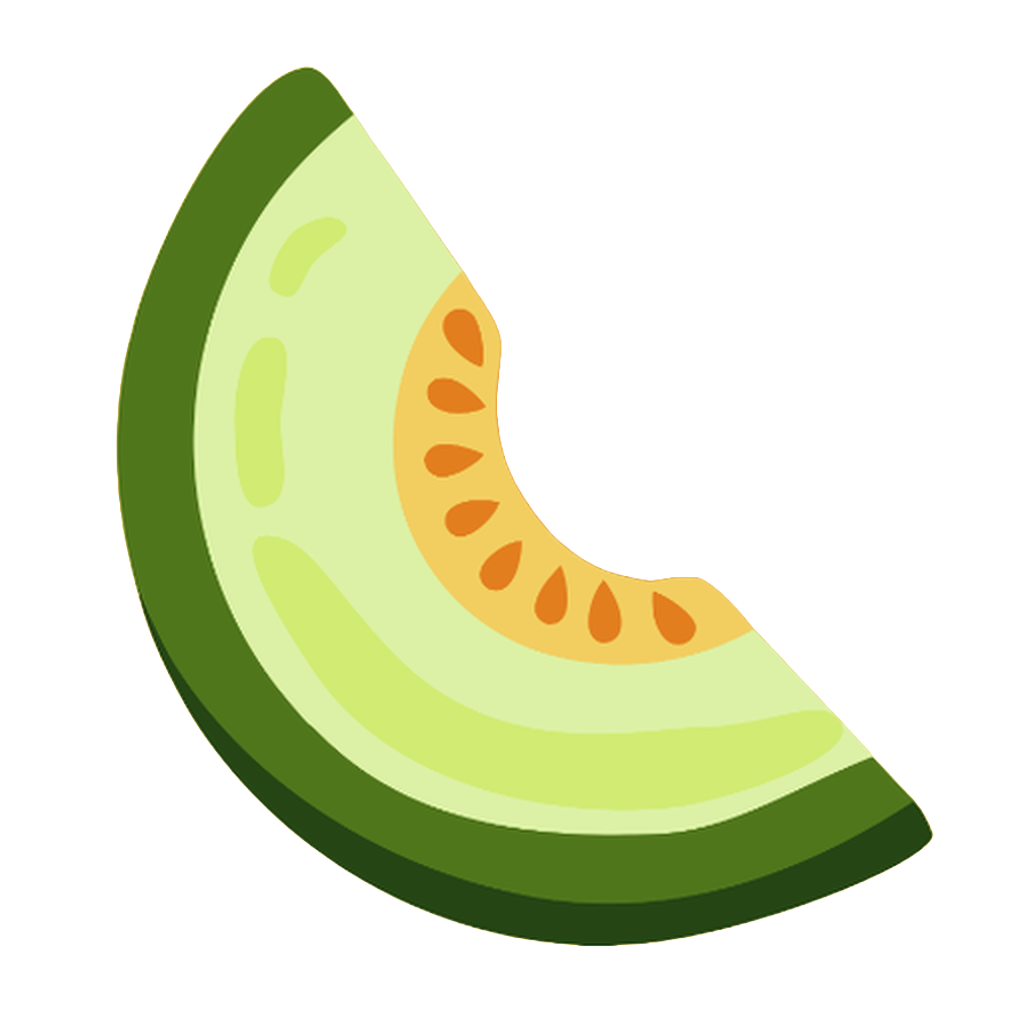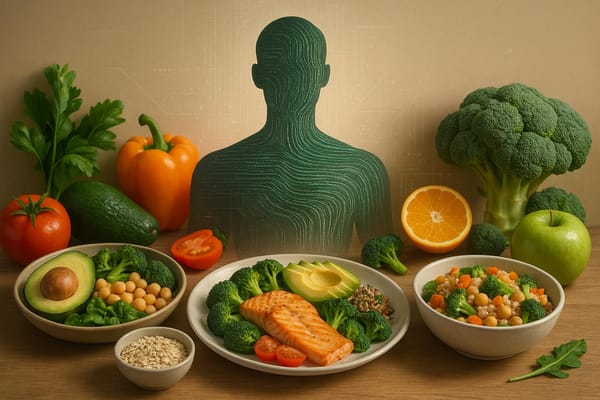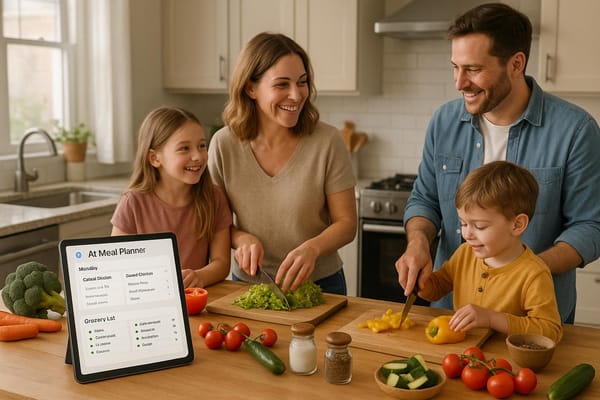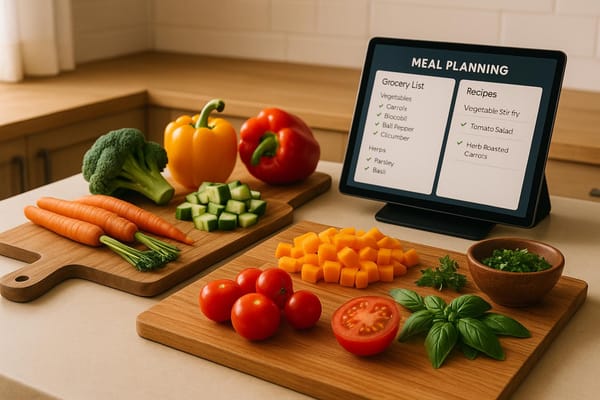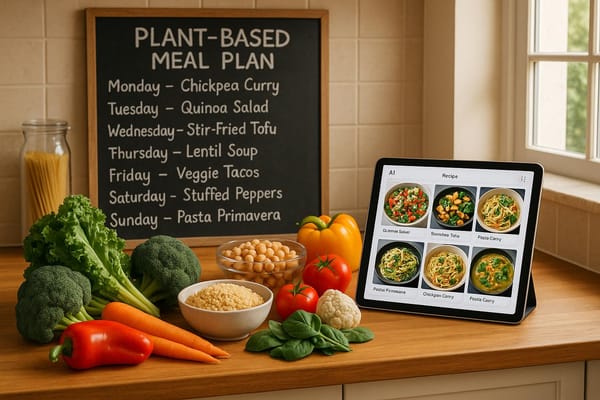Meal Planning Apps vs Manual Planning: Which Wins?
Explore the pros and cons of meal planning apps versus manual planning to find the method that fits your lifestyle, dietary needs, and schedule.
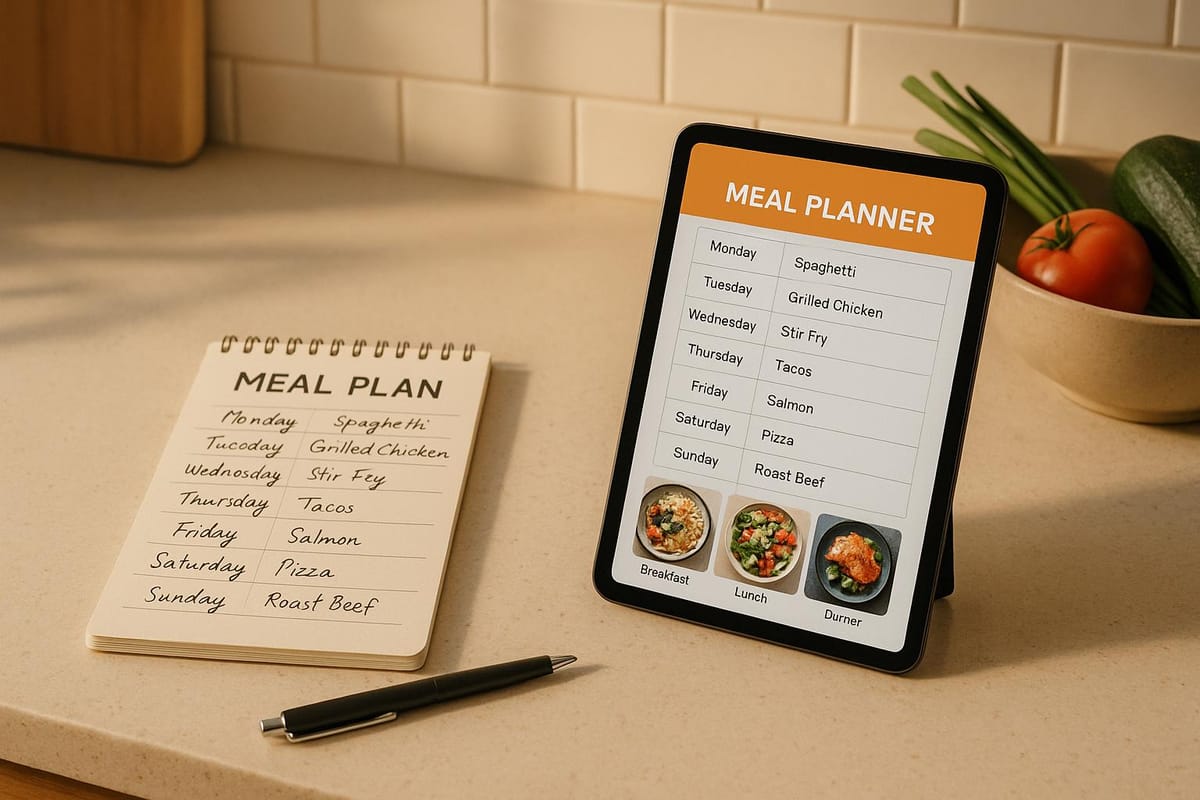
Meal planning can be a hassle. Whether you’re juggling dietary needs, a busy schedule, or a tight budget, choosing the right method can make a big difference. The two main options? Manual planning (pen and paper) or meal planning apps like Honeydew Recipe Manager. Here’s the quick breakdown:
- Manual Planning: Offers full control and simplicity. Great if you prefer writing things down, need minimal tools, or want to avoid screens.
- Apps: Save time with features like AI-based recipe suggestions, automatic grocery lists, and nutrition tracking. Perfect for busy families or health-conscious individuals.
Quick Comparison
| Feature | Manual Planning | Meal Planning Apps (e.g., Honeydew) |
|---|---|---|
| Time Investment | High (manual effort required) | Low (automated tasks) |
| Customization | Full control over every detail | AI-driven personalization |
| Nutrition Tracking | Manual calculations | Automated analysis |
| Collaboration | Difficult for multiple users | Real-time sharing for up to 6 people |
| Cost | Free (just pen and paper) | $4.17/month for premium features |
Bottom Line: If you value simplicity and control, manual planning works. If you need convenience and efficiency, apps are the way to go.
Pros and Cons of Using AI for Meal Planning
Time and Convenience: Apps vs Manual Planning
When it comes to meal planning, the method you choose can make or break your commitment to sticking with it. Traditional manual planning often involves flipping through cookbooks, jotting down lists, and organizing everything by hand - a process that can eat up a lot of your time. On the other hand, technology has stepped in to simplify this process, offering faster and more efficient solutions.
Time Requirements
Manual planning can be a time sink. From gathering recipes to writing out grocery lists, the process often stretches into longer-than-necessary shopping trips. Enter Honeydew Recipe Manager, which uses AI to handle these tasks for you. It suggests meals based on your dietary preferences and available ingredients, then automatically compiles a well-organized grocery list. This means you can spend less time planning and more time enjoying your meals.
Of course, using the app does require some initial setup - like entering your dietary restrictions and preferences. But once that's done, the app learns your habits and fine-tunes its recommendations, saving you even more time in the long run.
Features That Simplify Meal Planning
The Honeydew Recipe Manager is packed with tools designed to make meal planning as seamless as possible. Features like a drag-and-drop calendar, categorized grocery lists, one-click Instacart integration, and real-time collaboration make it easy to stay organized. These tools not only save time but also reduce the stress of planning.
Comparison Table: Manual vs App-Based Planning
| Task | Manual Planning | App-Based Planning with Honeydew Recipe Manager |
|---|---|---|
| Recipe Selection | Requires browsing through cookbooks or saved recipes manually | AI suggests meals tailored to your preferences |
| Grocery List Creation | Involves writing and organizing lists by hand | Automatically generates categorized lists |
| Plan Adjustments | Requires manual rewriting or reorganizing | Easily modified with a drag-and-drop calendar |
| Shopping Experience | Can lead to longer, less efficient trips | Streamlined with organized lists and integrated ordering options |
| Nutrition Tracking | Requires manual tracking and calculations | Offers automated nutrition analysis |
While app-based planning offers major advantages in saving time and staying organized, it does rely on technology and internet access. Manual planning, on the other hand, may lack efficiency but remains a dependable option without the need for digital tools.
Customization and Personalization: Manual vs Digital Options
When it comes to meal planning, both manual and digital methods offer ways to tailor your meals to personal tastes and dietary needs. But they differ significantly in how much control they give you and how they handle specific requirements like nutrition tracking and time management.
Manual Planning: Full Control in Your Hands
With manual meal planning, you’re in charge of every single detail. Want to include a cherished family recipe? Done. Need to tweak portion sizes for a dinner party? Easy. You can even make last-minute changes without being tied to a system’s limitations.
This method is ideal for seasoned home cooks who know their way around the kitchen. It allows you to craft menus that reflect your family’s favorite flavors, seasonal ingredients, and even traditional dishes passed down through generations. There’s no learning curve here - you’re not relying on algorithms or preloaded recipe databases, so everything feels personal and flexible.
You can also organize your planning however you prefer. Some people use detailed, color-coded calendars, while others jot everything down in a simple notebook. Whether you use sticky notes or your own shorthand system, manual planning makes it easy to adjust when plans change - like unexpected guests showing up or spotting a great deal at the grocery store.
But what about digital tools? Let’s look at how they handle meal planning.
App-Based Planning: Smarter Personalization
Tools like Honeydew Recipe Manager take a tech-savvy approach, using artificial intelligence to adapt to your preferences. The app learns from your recipe choices and dietary needs, offering increasingly refined suggestions over time.
One standout feature is the app’s shared planning option, which allows up to six family members to contribute. This makes it simple to coordinate meal ideas and build a profile that reflects everyone’s tastes. With this collaborative approach, the app’s AI can fine-tune its recommendations to suit the whole household.
Another advantage? The app can suggest ingredient substitutions when something isn’t available or doesn’t fit your preferences. It ensures the recipe still works while accommodating your specific needs - essentially acting as a virtual sous-chef with culinary expertise.
Dietary Restrictions and Food Preferences
Managing dietary restrictions is another area where these two methods differ. With manual planning, you’re responsible for double-checking every recipe to ensure it aligns with your dietary needs. While this gives you total confidence in your choices, it can be time-consuming - especially if you’re also calculating nutritional information for each meal.
On the other hand, Honeydew Recipe Manager simplifies this process. You set your dietary preferences once, and the app automatically filters recipes to match. Whether you’re avoiding gluten, following a vegetarian diet, or managing allergies, the app tailors its suggestions accordingly. It even calculates calories and nutritional details for each meal, saving you hours of effort.
For families juggling multiple dietary needs, the app’s ability to handle various restrictions simultaneously is a game-changer. It can suggest meals that work for everyone or offer easy modifications when necessary, making it a practical choice for busy households.
Nutrition and Health: Manual Tracking vs Automated Analysis
Keeping track of your diet can be a crucial step toward better health. When it comes to monitoring nutritional intake, the choice often boils down to manual tracking or using an automated app. Both methods aim to help you manage what you eat but differ in terms of effort, accuracy, and the kind of insights they offer.
Manual Planning: The Hands-On Approach
Manual nutrition tracking gives you complete control, but it’s no walk in the park. It requires a lot of time and effort, and spotting trends over time can be a real challenge. This method involves looking up calorie counts, measuring portion sizes, and calculating macronutrients for each ingredient by hand. Tools like food scales and measuring cups become your constant companions. However, this process is not only time-intensive but also prone to errors, especially when estimating portions or forgetting to log certain items.
App-Based Nutrition Tools: A Smarter Alternative
Enter Honeydew Recipe Manager, a tool designed to take the hassle out of nutrition tracking. The app automates the process, offering precise and detailed nutritional breakdowns, including calories, macronutrients, vitamins, and minerals for every serving. When you import a recipe, Honeydew analyzes each ingredient and updates the nutritional data automatically if you make changes.
The app also features smart meal planning, helping you craft balanced meals that align with your health goals. Plus, it’s built for families, allowing you to manage nutrition tracking for up to six household members from a single dashboard.
Comparing Manual and App-Based Tracking
| Feature | Manual Planning | Honeydew Recipe Manager |
|---|---|---|
| Time Investment | Time-consuming | Instant, automated calculations |
| Accuracy | Prone to errors | Precise ingredient-level analysis |
| Nutritional Insights | Limited to manual calculations | Detailed macro and micronutrient breakdown |
| Goal Tracking | Requires manual updates | Automated goal suggestions |
| Family Management | Separate tracking for each person | Tracks up to 6 members together |
| Learning Curve | Requires nutritional knowledge | Easy to use and beginner-friendly |
| Cost | Free but time-intensive | $4.17/month for full features |
This side-by-side comparison highlights the key differences between the two approaches. While manual tracking gives you hands-on control, it can be a tedious and error-prone process, especially over time. On the other hand, tools like Honeydew Recipe Manager simplify the experience, delivering accurate data and actionable insights that make sticking to a healthy diet more realistic and less stressful.
Practicality and Ease of Use: Offline vs Digital Methods
When it comes to meal planning, practicality plays a huge role in choosing a method that works for you. Both traditional manual planning and app-based tools come with their own set of advantages and challenges, and the right choice often depends on your personal routine and preferences.
Manual Planning: Reliable and Simple
There's something timeless about planning meals the old-fashioned way. A notebook or a stack of recipe cards doesn’t rely on Wi-Fi, won’t freeze during an update, and never runs out of battery. You can jot down meal ideas while browsing the grocery store or cross items off your shopping list with a satisfying strike of the pen. Plus, flipping through handwritten recipes - especially ones passed down from family - can add a personal, nostalgic touch to your routine.
Manual planning is also refreshingly straightforward. There’s no learning curve here - if you can write, you can plan. No need to worry about app subscriptions, compatibility issues, or figuring out how to navigate a new interface. For those who prefer to keep technology out of their daily routines, this approach offers a simple, no-fuss solution.
Another perk? Writing things down by hand can help you remember them better. Many people find that physically writing their meal plans makes them easier to recall later, compared to typing them into a digital tool. But while manual planning excels in simplicity and reliability, it can’t match the connectivity and features of digital tools.
App-Based Planning: Convenience at Your Fingertips
Digital tools like Honeydew Recipe Manager are designed for people who want everything in one place. These apps sync across devices, letting you plan meals on your laptop, then access your grocery list on your phone while shopping. Forgetting your list at home becomes a thing of the past.
Apps also bring efficiency to the table. With features like Instacart integration, you can order groceries directly from your meal plan. Tools like smart recipe importing allow you to save recipes from Instagram or Pinterest in seconds, eliminating the need to manually copy ingredients. For families, the household sharing feature is a game-changer, letting multiple members collaborate on meals and grocery lists in real-time. Everyone stays on the same page, whether it’s deciding who’s cooking or updating the list with last-minute changes.
The ability to make real-time updates is another big plus. If someone adds or changes something, everyone sees it immediately - no more outdated lists or missed ingredients. For tech-savvy households, this level of convenience is hard to beat.
App Limitations to Keep in Mind
Despite their many perks, digital tools aren’t without flaws. One common issue is technology dependence. Apps like Honeydew require a $4.17 monthly subscription for premium features, and server outages or connectivity problems can leave you temporarily locked out of your plans.
There’s also a learning curve to consider. While apps aim to be user-friendly, navigating multiple features and syncing devices can feel overwhelming, especially for those less familiar with technology. Updates can also bring unexpected changes to the interface, which might disrupt your routine. Unlike a notebook that stays consistent, apps are constantly evolving, and that’s not always a good thing for users who value stability.
Ultimately, the best meal planning method depends on your lifestyle. Whether you prefer the tactile simplicity of pen and paper or the modern convenience of a digital app, finding what fits your routine is what matters most.
Choosing the Right Method for Your Lifestyle
Finding the best planning method depends on your daily routine, comfort with technology, and household needs. Let's break down which option might work best for you.
Who Should Use Manual Planning?
If you enjoy putting pen to paper, manual planning might be your go-to. A simple notebook can be an easy and effective tool for organizing your meals and grocery lists. Here’s who might prefer this method:
- Fans of handwritten organization: Writing things down can feel more personal and help reinforce your plans.
- Budget-conscious households: A notebook and pen are one-time purchases, making this option a wallet-friendly choice.
- Screen-time reducers: For those looking to unplug, manual planning avoids the need for apps and digital tools.
- Simple meal planners: If your meals follow a set routine, a notebook is more than enough to keep things on track.
However, if you’re looking for added convenience and advanced features, app-based planning might be a better fit.
Who Should Use App-Based Planning?
For those who thrive on digital tools, an app like Honeydew Recipe Manager offers a range of features to simplify meal planning and grocery shopping. Here’s who will benefit most:
- Busy professionals and families: Honeydew keeps everyone on the same page with shared access for up to six people, so coordinating schedules and grocery lists becomes effortless.
- Health-focused planners: Automatically track calories and nutrients with Honeydew’s built-in tools, removing the guesswork from healthy eating.
- Recipe enthusiasts: If you love saving recipes from social media, the app’s AI-powered import feature makes it easy to store and organize them. The Honeydew Plus plan even offers unlimited recipe storage for your growing collection.
- Convenience seekers: Features like one-click ingredient ordering through Instacart and smart AI-generated grocery lists save you time and effort. At just $4.17 per month, the Plus plan is a small price to pay for streamlined planning.
Decision-Making Factors
When deciding between manual and app-based planning, consider these factors:
- Time Commitment: If you have the time to plan meals each week, manual methods may work fine. But for those with packed schedules, the flexibility of an app is a game-changer.
- Dietary Needs: Managing allergies or tracking complex nutritional goals? Honeydew’s automated features can simplify the process.
- Tech Comfort: If apps feel overwhelming, stick with the simplicity of a notebook. But if you’re comfortable with digital tools, an app offers more efficiency.
- Household Size: Solo planners might find manual methods sufficient, while families with shared responsibilities can benefit from Honeydew’s collaborative features.
Not sure if digital planning is for you? Try the free version of Honeydew Recipe Manager. With it, you can import up to 10 recipes and explore basic meal planning features to see if it fits your lifestyle before committing to an upgrade.
Conclusion: Finding Your Meal Planning Winner
Choosing between manual and app-based meal planning comes down to what suits your lifestyle best. Manual planning gives you total control with minimal cost, making it ideal for those who enjoy jotting things down, have straightforward meal routines, or want to cut back on screen time.
On the other hand, digital tools simplify the process by automating tasks like importing recipes, creating grocery lists, and tracking nutrition. Apps like Honeydew Recipe Manager turn meal planning from a tedious task into an efficient system - especially helpful for busy households. They bring convenience to the forefront, saving time and effort.
For those focused on health, apps take the guesswork out of managing dietary goals with automated calorie and nutrient tracking. While manual planning only requires a notebook and pen, apps like Honeydew Plus, costing $4.17 per month, can save hours each week - time that’s invaluable for many. Household size also matters; solo planners may find manual methods sufficient, while families often benefit from the collaborative features of digital tools.
Start by assessing your habits. If you’re comfortable with digital solutions and value efficiency, apps are a natural fit. If you enjoy the tactile experience of handwriting and prefer simplicity, manual planning might be your go-to. Not sure? You can always experiment with Honeydew’s free version to see if digital planning complements your routine. Ultimately, the best choice is the one that aligns seamlessly with your daily life.
FAQs
What are the key advantages of using a meal planning app like Honeydew Recipe Manager instead of planning meals manually?
Using a meal planning app like Honeydew Recipe Manager can make life a whole lot easier by taking the hassle out of organizing meals. Here’s how it stands out:
- Saves time: The app automatically generates recipes and shopping lists, so you don’t have to start from scratch every week.
- Keeps you organized: With handy features like reminders and syncing, you can stay on top of your meal plans, even during hectic days.
- Cuts down on food waste: By planning smarter, you’ll buy only what you need and get the most out of your ingredients.
If you’re aiming to simplify meal prep, reduce stress, and save time, Honeydew Recipe Manager is a tool worth trying.
Can Honeydew Recipe Manager accommodate different dietary needs and preferences for my family?
Honeydew Recipe Manager simplifies meal planning for your entire household. With the ability to share access with up to six family members, everyone stays on the same page. Plus, you can tweak recipes by swapping ingredients to accommodate dietary needs or personal tastes.
This makes it a breeze to create meals that work for everyone, taking the hassle out of personalized meal planning.
Is it difficult to switch from planning meals manually to using a digital app like Honeydew?
Switching from traditional meal planning to a digital app like Honeydew might feel like a big change, but it’s often easier than you’d think. While you’ll need a little time to explore its features and set up your preferences, many users quickly discover that the app can save them a lot of time and hassle.
To ease into the process, start small. Add a few of your go-to recipes and try out tools like the grocery list generator or meal customization options. Before long, you’ll notice how Honeydew streamlines your planning and keeps everything organized with barely any extra effort.
